Get the week's most popular posts delivered to your inbox.
Our weekly update is free yet priceless and you're less than a minute away from getting the current edition.
In the unlikely event we disappoint, you can unsubscribe with a single click!
Last Updated on July 2, 2025 by teamobn
There’s something about planters on wheels that we find adorable. Agree? We can’t help but find planters with wheels utterly adorable.
After all, there’s something about the combination of plants and wheels that just seems to work. And these planter ideas are proof positive that you can create some truly amazing things when you put your mind to them.
So if you’re looking for a little inspiration, be sure to check out these fantastic planter ideas. You might just be surprised at what you can create!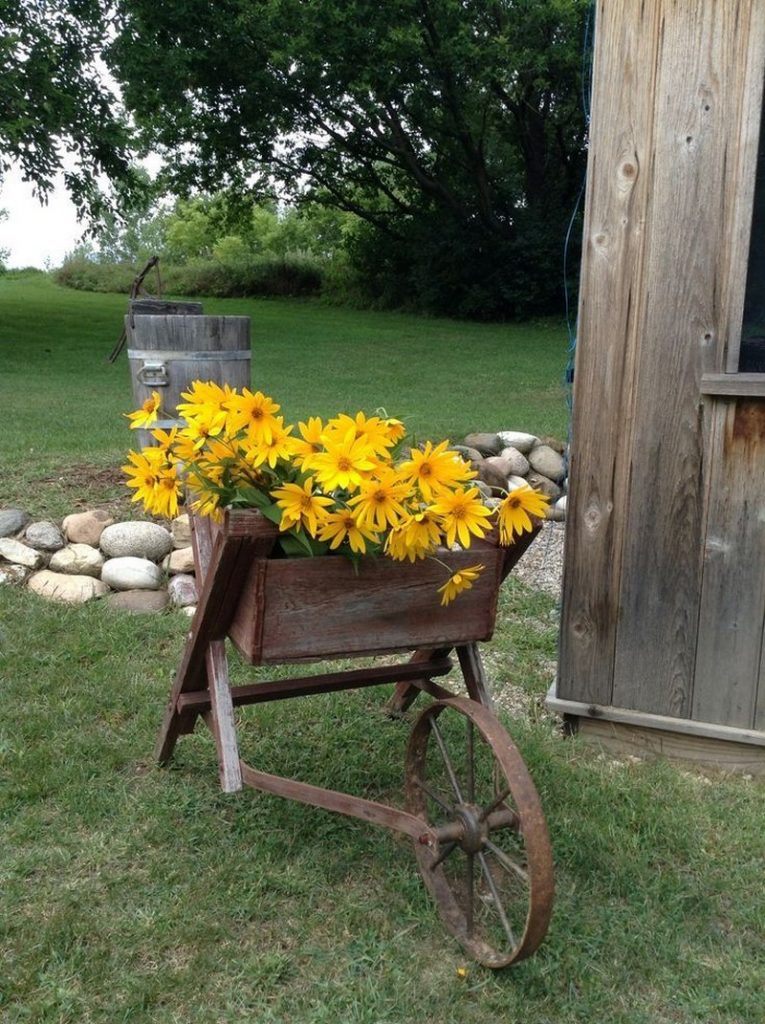
Planters on wheels, like the ones featured below, aren’t just cute and decorative features for your garden. They also come in handy when you need to move plants around your yard.
Aside from flowers, herbs and succulents, these planters on wheels are also great for making fairy gardens!
Have the kids outgrown their toys and bikes? Or perhaps you found a nice-looking wagon or grocery cart at the thrift store? Why not use them as planters? You will surely adore these planters on wheels we prepared for you!
Amazing Planter on Wheels
Click on any image to start the lightbox display. Use your Esc key to close the lightbox. You can also view the images as a slideshow if you prefer.
Toy Trucks as Planters on Wheels
These toy trucks come in all shapes and sizes, and of course, conditions. One suggestion we’ll make is that you make sure your truck isn’t a collector’s item before you fill it with dirt! These toy trucks as planters on wheels can be surprisingly valuable!
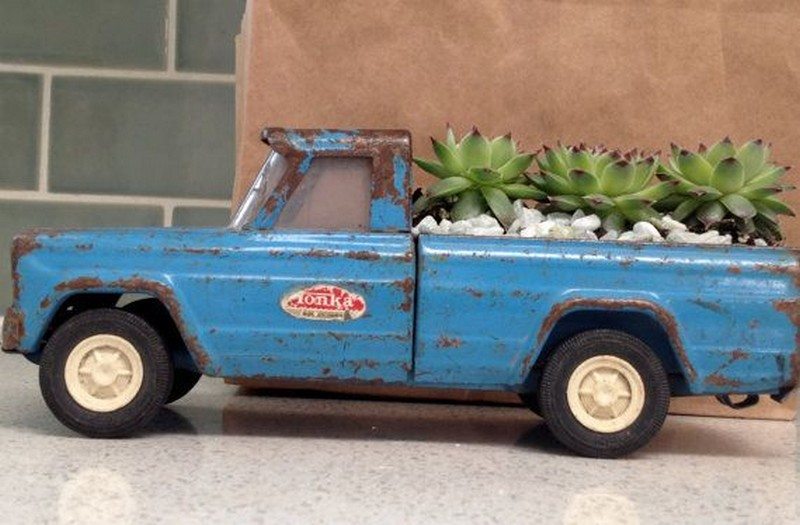
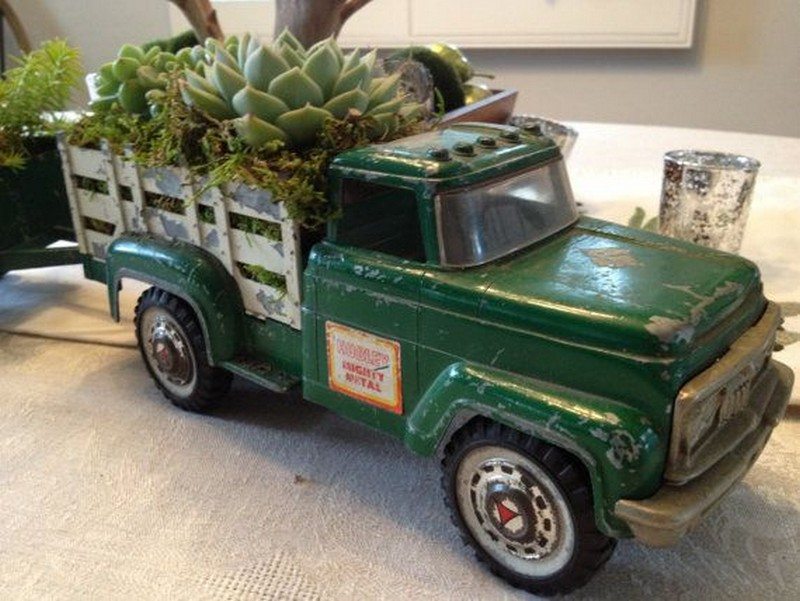
Wheel Barrows as Planters on Wheels
There comes a time in every wheelbarrow’s life when it’s time to say goodbye to the heavy cartage role. Sometimes it’s the axle gone, or the tyre or the tray starting to rust through. Give them a new lease on life as a mega flowerpot!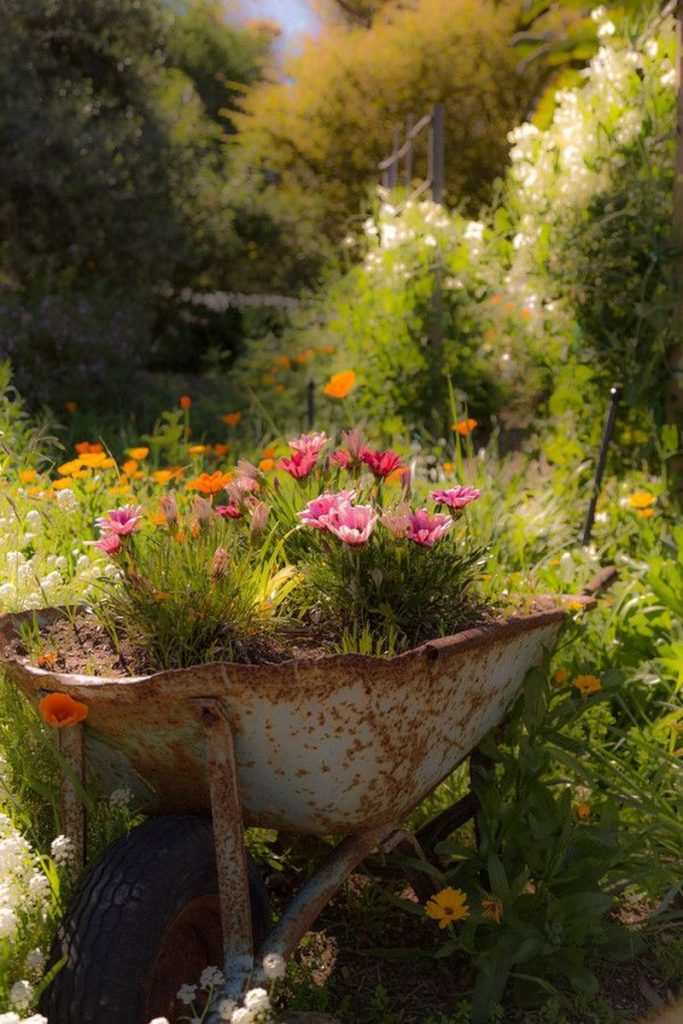

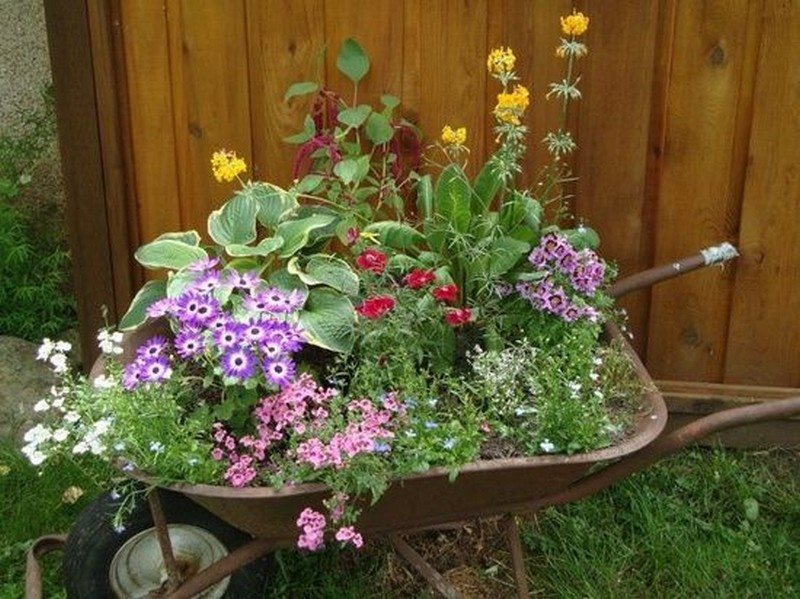
Bicycles
There are numerous reasons bicycles are becoming discarded every day. Many get turned into scrap but lots just go to landfill. Some just get thrown away.
A trendy way to dispose of them is to use them to make a planter on wheels. This planter on wheels idea is a great way to make the most of your discarded bikes.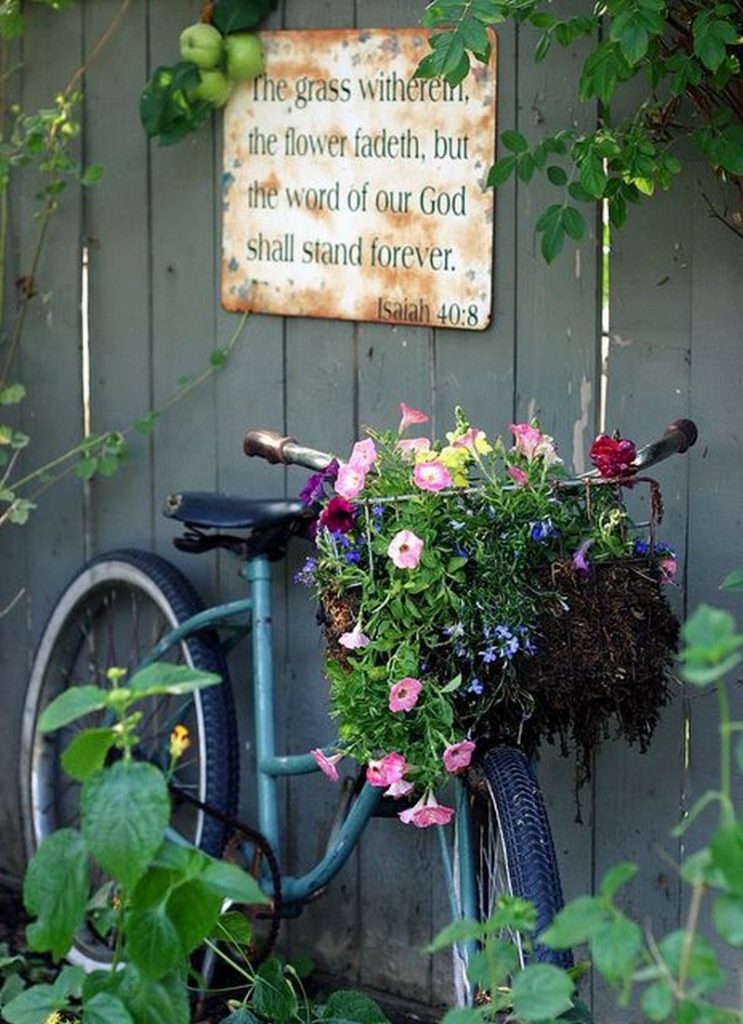
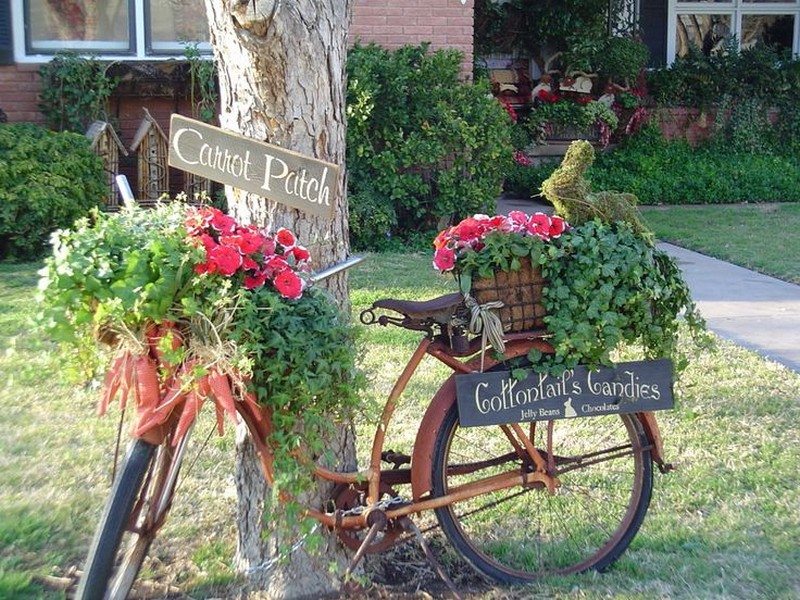

Tricycles
We all had one and probably wonder what happened to it. Maybe you can recognise your childhood tricycle below? We’ll bet you’ll think differently next time you see one on a rubbish pile!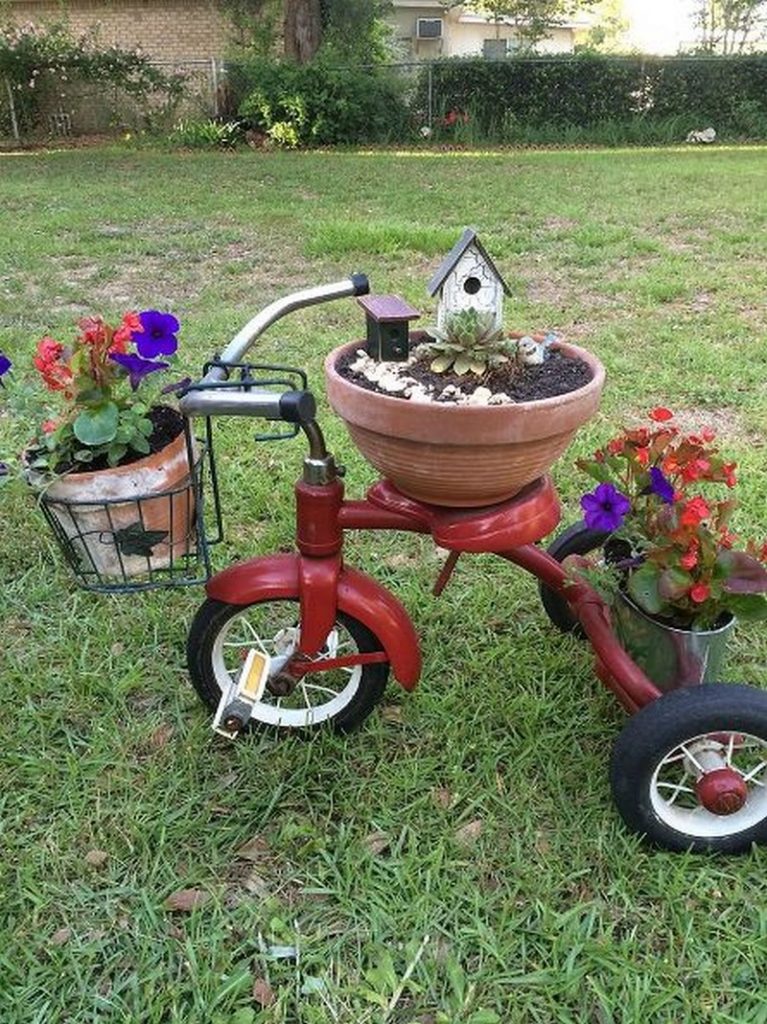
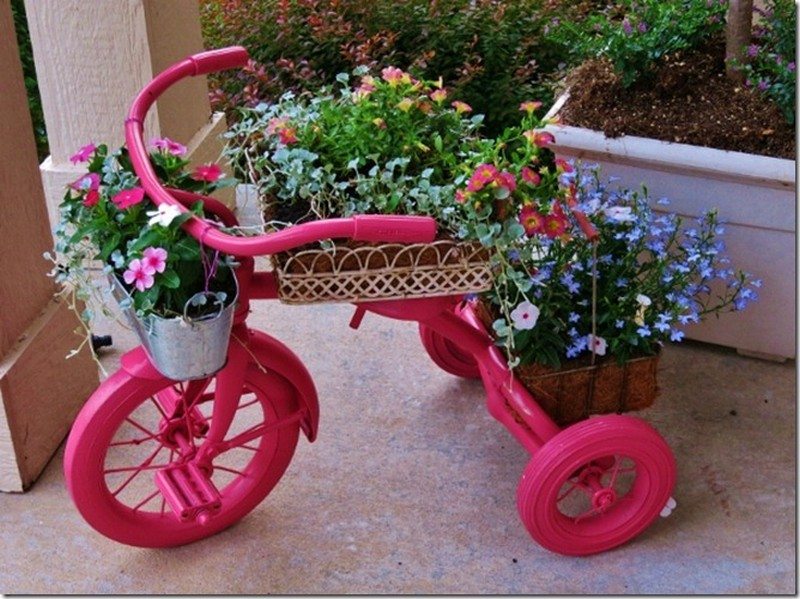

Shopping Carts
Yes, even shopping carts get old. Here’s an entirely new twist on home-delivered herbs, veggies and flowers!
This is a product that will revolutionize the home garden. The shopping cart planter is a truly unique idea. This planter is unlike any other planter because the shopping cart is repurposed into an incredibly useful planter.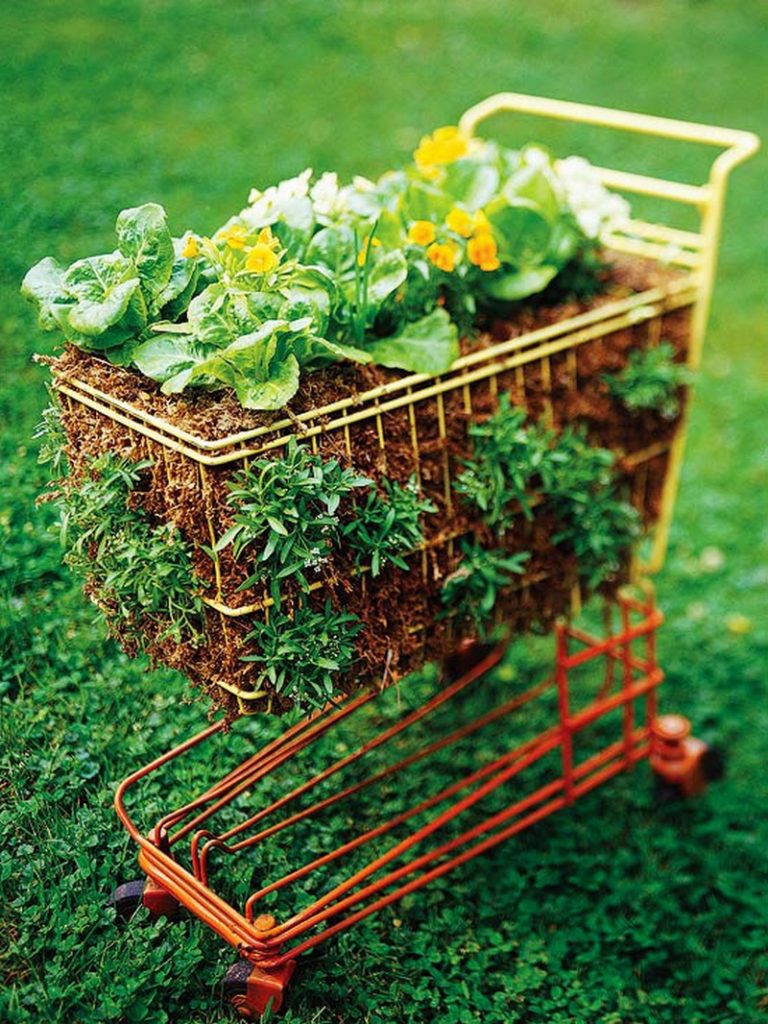
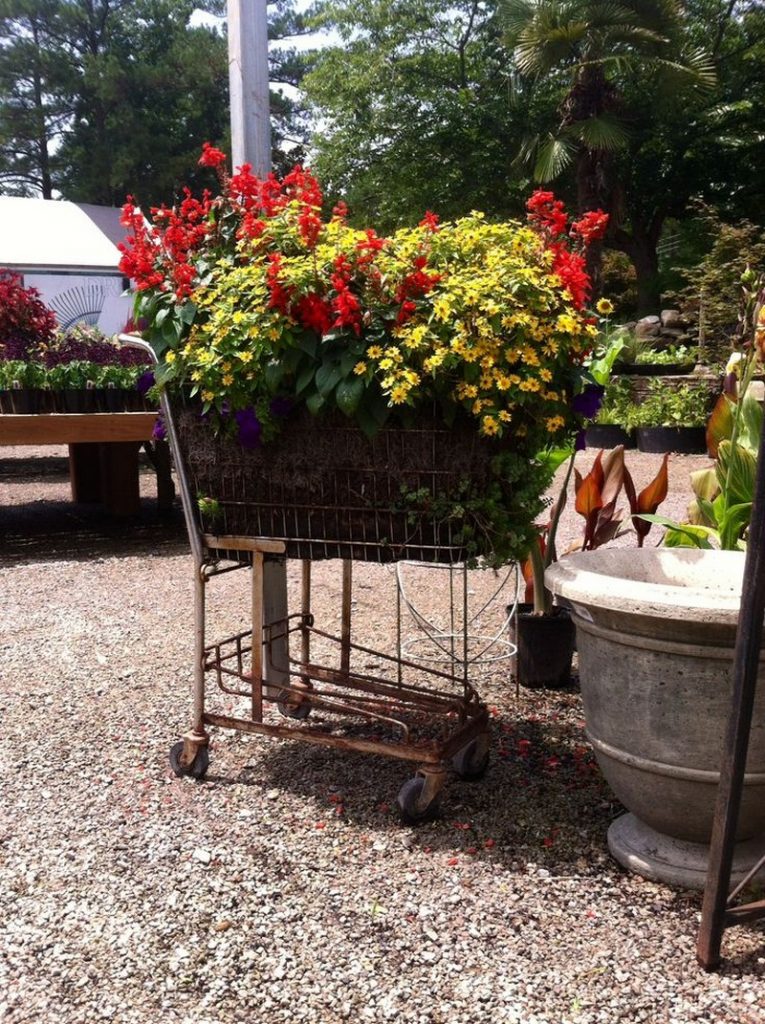
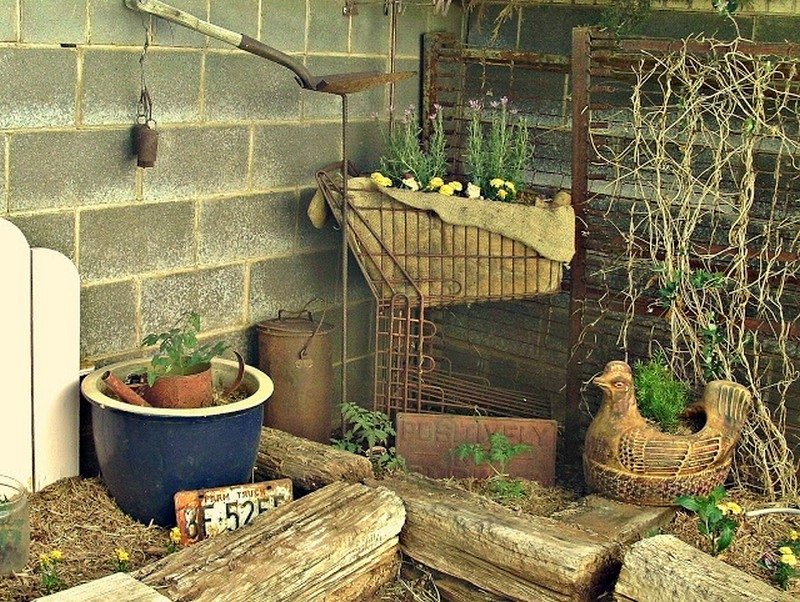
Wagons
Ah… the little red wagon (the blue one is an imposter)! Every child loves dragging their worldly treasures around in their wagon for the first two or three years of their lives. If you’ve been holding on to one looking for the next owner, pull it out and fill it up… with flowers!

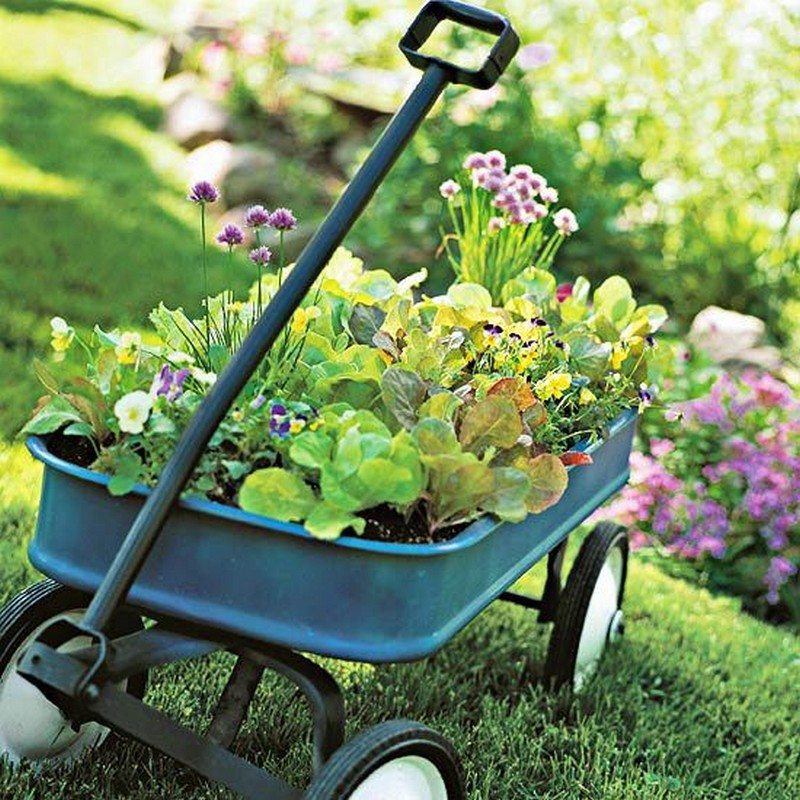
Vintage Wagons
You’re not likely to find one of these on a rubbish heap! But if you’re lucky enough to have one sitting in the yard, load it up with pots of seasonal flowers!
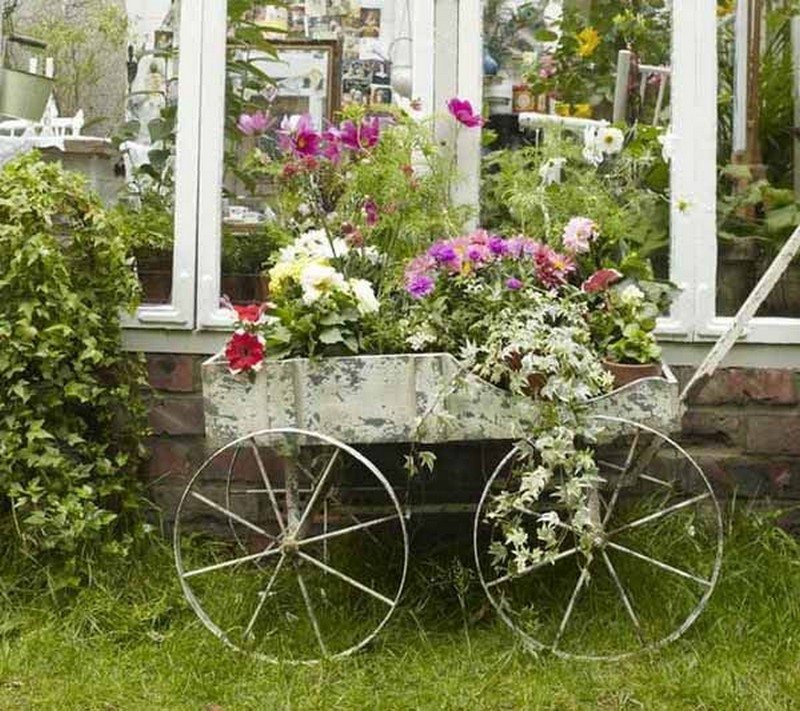
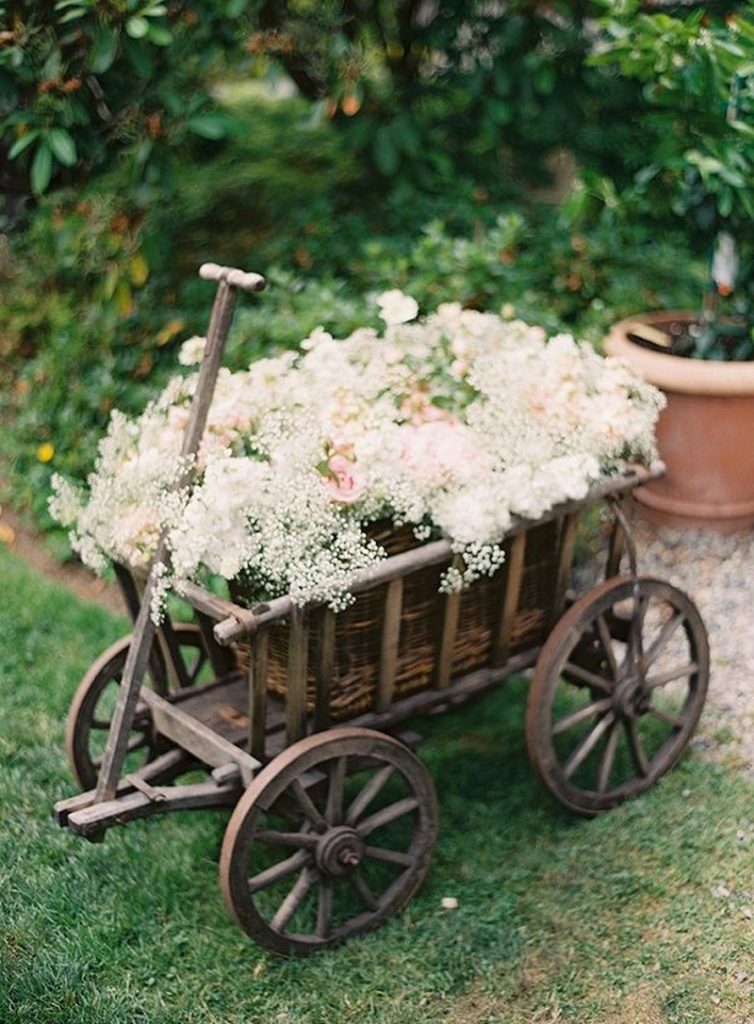
Pallet Crates
Sure, single-use pallets may get a second or third chance somewhere, but they’re not built to last. Why not upcycle them into something more durable and long-lasting, like planters on wheels?
With just a few caster wheels, you can create your own movable garden – perfect for adding a touch of greenery to any space. Plus, upcycling pallets helps reduce waste in landfills. It’s a win-win!
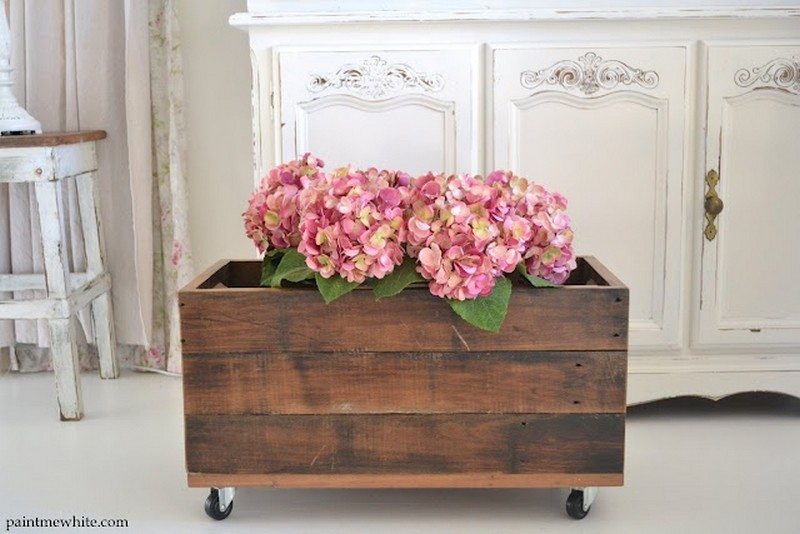
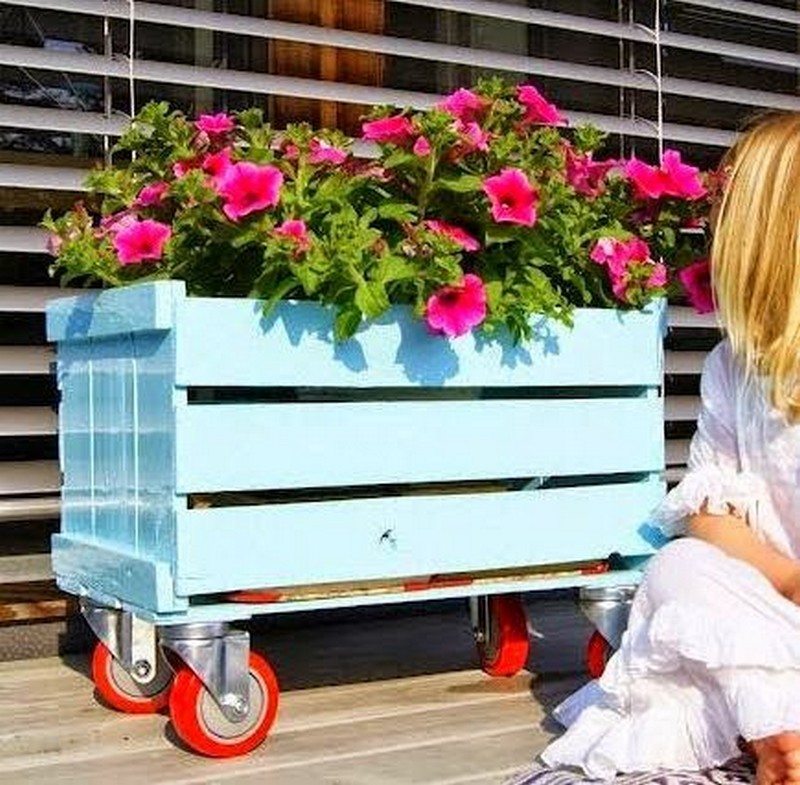
Advantages of Planter on Wheels
Moving planters instead of soil saves time and backs. A planter on wheels turns heavy gardening tasks into quick, enjoyable glides across the patio.
Effortless Seasonal Shifts
Spring sun creeps, summer scorches, and autumn chills. Sliding a planter on wheels to match these changes takes seconds, not hours. No digging, no transplant shock, just smooth relocation. Wheels turn an entire miniature bed into a mobile stage that tracks light through the day.
Balcony gardeners love the flexibility because shadows shift as buildings block the sky. When mornings feel too hot, a gentle push moves foliage to a cooler corner. Healthier leaves and continuous blooms follow the simpler routine.
Reduced Heavy Lifting
Water adds weight. A twelve-inch clay pot can exceed twenty kilograms after a deep soak. Lifting that mass risks strained backs and cracked rims. A planter on wheels carries the load, so you guide rather than hoist.
Handles or push bars improve leverage and posture. Rolling indoors for a cyclone or out again for sunshine becomes a calm task. Frequent moves also loosen compacted soil because vibrations break small crusts around the root zone.
Easy Microclimate Control
Every yard hides warm walls, cool breezeways, and humid corners. Mobility lets you test each microclimate until plants thrive. Inspect leaves at midday, then nudge the planter on wheels toward stronger light if color looks pale. Shift shade lovers beneath taller pots in the afternoon.
Mobility discourage pests that gather in one area because hosts never stay still. The same system guards seedlings during surprise frosts by wheeling them under shelter without rushing to cover each pot.
Safer for Seniors and Kids
Gardening brings families together. Safety keeps it fun. Wheels reduce drop risk for small helpers and grandparents with limited strength. Nobody grips slippery rims or trips over uneven paths.
The container rolls around obstacles rather than forcing awkward lifts over them. Independence rises, motivation follows, and bonding grows stronger under blooming geraniums. Injuries stay rare because the load rolls smoothly instead of swinging unpredictably.
Choosing the Best Casters: Size, Material, and Load Ratings for Outdoor Use
Selecting casters is the backbone of any planter on wheels. The right wheel keeps the garden moving across grass, gravel, or deck boards without drama.
Matching Caster Diameter to Terrain
Wheel diameter shapes performance. Two-inch casters snag on brick gaps, throwing pots off balance. Four-inch wheels glide over patio seams and lawn edges with ease. Choose a size that clears your roughest surface by at least one centimetre.
That clearance protects axles and roots from sudden jolts. The adjustment keeps the planter on wheels functional on more than a flat veranda. Large wheels also spread weight, reducing pressure on fragile tiles. Test the setup before planting to confirm a smooth journey.
Core Materials and Their Trade-Offs
Casters come in plastic, rubber, polyurethane, and stainless steel. Plastic feels light yet turns brittle under sun. Rubber cushions vibrations but grips concrete too firmly. Polyurethane balances toughness with gentle floor contact.
Stainless hardware resists rust in wet conditions. Examine climate, weight, and movement frequency. A planter on wheels that sits under sprinklers benefits from sealed bearings and rustproof frames. Investing in quality avoids seized hubs and frustrating wheel replacements.
Load Ratings and Weight Distribution
Soil and water become surprisingly heavy. Weigh the empty pot, then add the mass of saturated soil and plants. Increase that figure by twenty percent to stay safe. Divide the result by the number of casters to pick an appropriate rating for each wheel.
Keep the axle line close to the pot’s centre of gravity. A low, wide base prevents tipping even after a midsummer deluge. Done right, the planter on wheels rolls steadily instead of wobbling.
Locking Mechanisms for Stability
Mobility must pause occasionally. Foot operated brakes that lock both wheel and swivel hold position during wind or pruning. Two locks suffice on level patios, but sloped spaces need four.
A positive click signals engagement. Stainless or brass pedals resist corrosion longer than zinc alternatives. Secure brakes mean the planter on wheels stays exactly where you want until the next move day.
Soil Depth and Drainage Tips to Keep Plants Healthy in a Rolling Container
Soil and water react differently when containers move. A planter on wheels needs depth and drainage tuned for motion to keep roots as you roll.
Calculating Ideal Soil Depth
Root length guides depth. Shallow herbs thrive in twenty centimeters, while dwarf citrus prefers forty. Add five centimeters of clearance below the rim for mulch and to prevent splash.
Deeper soil anchors plants during transport and shields roots against temperature swings caused by wind. Keep total height low enough so the centre of gravity stays beneath the axle line. Stable geometry avoids tipping on inclines and door thresholds.
Layered Drainage Foundations
Build drainage in layers. Start with a permeable fabric to stop soil loss. Add coarse gravel or broken terracotta for airflow. Spread horticultural charcoal above that to absorb odors and toxins. Finish with quality potting mix blended with perlite.
Excess water drops through to the base and exits cleanly without clogging holes. This structure trims weight a little, making the planter on wheels easier to steer across the patio.
Preventing Root Rot Through Ventilation
Ventilation is the antidote to waterlogged roots. Drill generous holes in the container floor and lower sides, then rest the wheels on spacer blocks so air circulates freely. Avoid solid saucers that trap runoff unless you add overflow ports.
Rolling the pot each morning exposes different faces to sun and breeze, which accelerates evaporation. Combine that airflow with a chunky soil blend and fungi struggle to gain a foothold.
Monitoring Moisture in Mobile Containers
Gravity shifts with every move, so moisture pockets form in new spots after you park. Insert a probe in multiple locations and water only when most readings fall to the moist range, not wet. Keep a notebook that pairs readings with dates and weather.
Patterns emerge that tell you when relocation increases or slows drying. Use that knowledge to adjust your schedule. Caring for a planter on wheels becomes a data-driven habit rather than guesswork.
Conclusion
Planters on wheels combine charm with practicality. They let gardeners chase sunlight without heavy lifting. Mobile pots protect fragile roots during storms and heatwaves. Quality casters and good drainage keep plants healthy for years. Rollable containers turn any patio into a flexible, thriving garden.
If you liked these gardening ideas, you might also like these landscaping and garden design posts…
Get the week's most popular posts delivered to your inbox.
Our weekly update is free yet priceless and you're less than a minute away from getting the current edition.
In the unlikely event we disappoint, you can unsubscribe with a single click!






